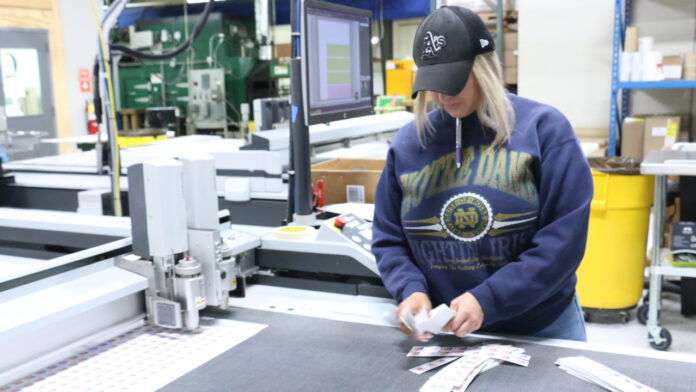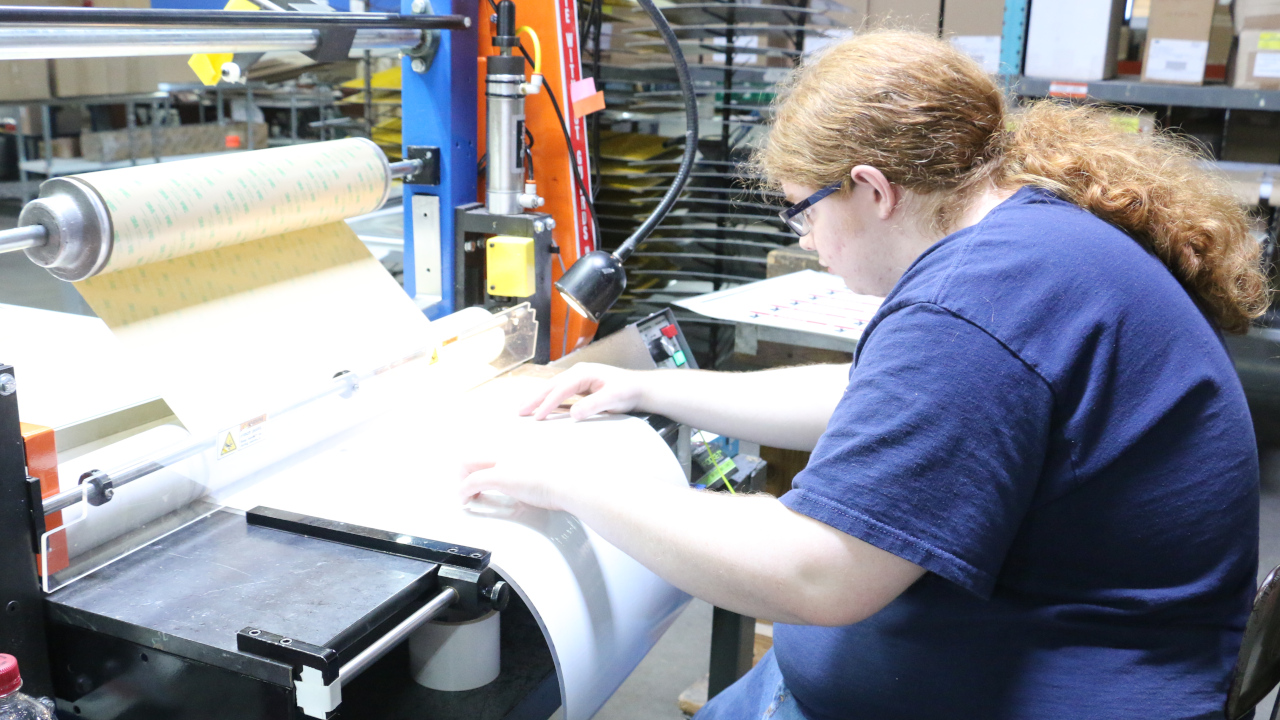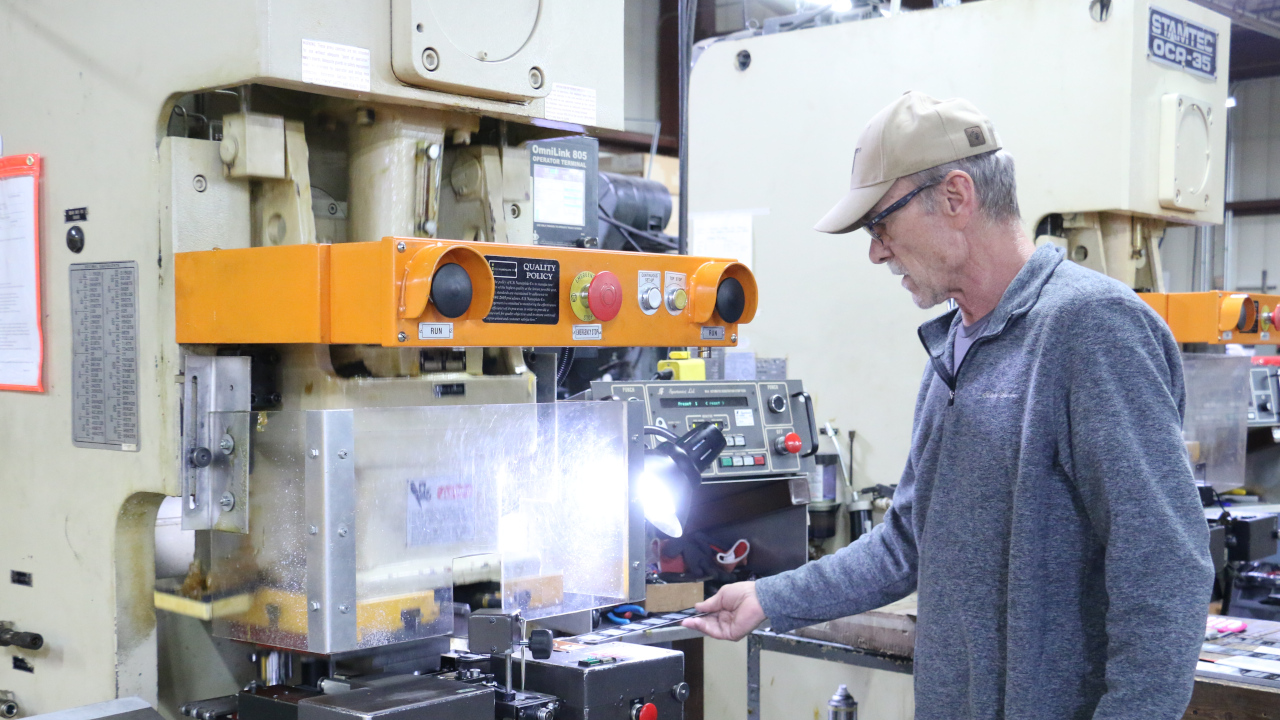
Workplace scheduling models have been forever impacted by the COVID-19 pandemic, with fully-remote, hybrid and flex alternatives now a common option for employers and employees across several fields.
One model some would describe as norm-altering – a true four-day work week, in place for one Corridor manufacturer for several years – is now part of a trend sweeping through Europe as a viable, even preferable, alternative for millions of workers, and being considered by a growing number of U.S companies.
So how well does a four-day work week actually “work?” Surprisingly well, say those who’ve implemented it – so well, they say, that there’s probably no turning back from a model, once considered groundbreaking, that’s rapidly becoming a viable alternative across the workplace landscape.
U.S. Nameplate’s experience
A four-day workweek has been in place for U.S. Nameplate’s manufacturing employees since 2015.
And as company president Andrew Novetzke sees it, there’s no turning back.
U.S. Nameplate, a Mount Vernon family-owned company, founded in 1946 by Cedar Rapids industrialist Howard Cherry, makes industrial nameplates, labels and tags from a variety of materials, serving customers throughout the United States and internationally.
Mr. Novetzke was named company president in 2014 after a career in the motion picture industry, where workdays often spanned 12 hours or more, with several hours between breaks. The experience, he said, planted the seed for consideration of longer work days – and fewer of them.
“We just worked really hard, grueling hours when we were on a film,” he said. “Then you walk into this factory setting where you start work at 8 a.m., and then an hour and 15 minutes later, you’re on a break. Then you go back to work and start churning again, and now it’s lunchtime. It just seemed like momentum and productivity never had the opportunity to get its stride with (that) schedule.”

Mr. Novetske then presented the idea of an alternative workweek schedule to company employees – four days a week, 10 hours each day.
“It was defined by the notion of how much time we spend at work, especially an hourly employee that is tied to a manufacturing speed,” Mr. Novetzke said. “And I just said ‘here’s the possibility of a three-day weekend, it means you’re gonna be working longer between breaks.’ We gave it a shot and everybody loved it, and I can’t get them to change now.”
The four-day schedule – Monday through Thursday, 10 hours per day – doesn’t apply to company employees with customer-facing responsibilities, but the notion could “easily trickle up” to other types of administrative or office roles, Mr. Novetzke noted.
The four-day work week has proven especially popular with the company’s younger employees, for a variety of reasons.
“I would say on the surface, the three-day weekend is 80% of it,” he said. “Plus, there’s young employees with children and they can see them off to school, they can be at home when they come home from school. They can get appointments with professionals (on Fridays) that they need to see that aren’t normally open on the weekend. It’s very functional for everyday living.”
Mr. Novetzke said U.S. Nameplate routinely surveys workers to see if they continue to support four-day work weeks. He’s presented options for alternate schedules during winter months, or hybrid schedules to allow longer-tenured employees to work on weekends if desired.
The results are always the same, he said – broad support for the four-day work week model, even among the company’s more seasoned employees.
“More than half of our employees had been here for 20 years, and several had been here for 30 years,” he said. “They were in their 60s. So there was concern about fatigue on a 10-hour day. But they were fine. They had that three day weekend, so they were like, ‘this is good.’”
Mr. Novetzke said he hasn’t noticed a significant impact on employee productivity or manufacturing costs as a result of the shortened workweek.
Another benefit surfaced that Mr. Novetzke hadn’t anticipated – if overtime is needed to complete a job on a tight schedule, working on occasional Fridays became a built-in option.
“2022 was an incredibly busy year for us,” he said. “We were setting records on every front. So we did have to work some Fridays, so it’s nice to have that in our pocket, and not have to take up an employee’s Saturday.”
And while current employees are overwhelmingly happy with their four-day work weeks, Mr. Novetzke said the company also makes a point of emphasizing the model for new applicants.
“We always state that in our job postings,” he said. “Four 10-hour days. That’s what we say.”
Worldwide interest growing
The four-day work week may be an innovative workplace model in the U.S., but it’s already gained a solid foothold in many other countries, particularly in Europe.
A six-month trial in the United Kingdom, run by the nonprofit group 4 Day Week Global and the think tank Autonomy, included nearly 3,000 workers at 61 companies from June to December 2022, making it the world’s biggest four-day workweek experiment to date, according to CNBC.
The study showed a variety of benefits to a four-day workweek, ranging from reduced burnout to improved productivity, morale and team culture for businesses and improved health, financial status and interpersonal relationships for employees.
The study was conducted using a “100-80-100” model, whereby workers received 100% of their regular pay for working 80% of the time and producing 100% of their standard output.
“Looking at the current complete picture, the trials are rated very highly by companies, with productivity and business performance scoring well,” the study’s summary indicates. “Revenue is up while absenteeism is down and the vast majority of participants are continuing with a 4 day week.
“One interesting observation is that findings are consistent across a variety of sub-groups in the sample, such as with men and women, small companies and bigger, and generally across industries. Workers reported feeling heard, being able to work effectively and competently, and relating well to co-workers.
“Overall satisfaction with work and life is higher, with employees reporting lower rates of burnout and better physical and mental health. People also have fewer problems with sleep and are exercising more.”
Fast Company reports that momentum for a shorter workweek is picking up across the globe, with trials and efforts underway in Iceland, Wales, Japan, New Zealand, Ireland, and Scotland. This year, the government of Valencia, Spain, started recruiting for a region-wide pilot of shorter hours, and 115 United Kingdom companies, including larger firms such as Awin and Atom Bank, have now adopted a four-day week.
The 4 Day Week Global report indicated that the study’s findings are consistent across different sample groups: men versus women, small versus big companies, and generally across industries.
Some of the positive results, CNBC reported, were even greater for women, in particular around reduced burnout, increased life and job satisfaction, improved mental health and reduced commuting. Men, meanwhile, were more likely to use their extra time to contribute more to housework and child care.
The trend may even offer environmental benefits, a Time magazine article notes, with lower utility costs for employers and fewer commuting miles for employees.
4 Day Week Global is now recruiting companies for four-day workweek trials in the United States and Canada, South Africa, and throughout Europe. So it may be too early to determine the model’s overall future with American companies.
‘Another tool in the arsenal’
For Samantha Rogers, it’s no surprise that four-day work weeks are an emerging trend among the many workplace scheduling alternatives that have emerged in recent years and gained significant momentum during the COVID-19 pandemic.

From hybrid work models to fully-remote positions, and now the four-day work week, today’s employment scene offers more options than ever before, and Ms. Rogers, human resources business director at the Skywalk Group in Cedar Rapids, said they provide multiple benefits for employers and employees alike.
“I think it’s just another tool in the arsenal that allows people to be flexible, to concentrate and to be productive for longer periods of time,” Ms. Rogers said. “We do time management training that talks about how to be successful in managing your day and your responsibilities as things change at any given moment. And some of the advice we give is ‘;one day at a time, one chunk at a time, one project at a time.’
“So when you’re able to group things together and hyper-focus for one chunk or one project at a time, it could be more beneficial than saying, ‘Oh, I have six hours and I’m ending at 4:30 or 5:00, so I have to stop what I’m working on and then join the next day.’ So it can be a good option. But not everyone works that way.”
The biggest benefit of various workplace models, Ms. Rogers said, is being able to evaluate which option best serves a company’s individual needs.
“The word of the year is flexibility,” she said. “And I think we’re just going to continue to see different ways that people are experimenting with that. Some people are early birds and they get their best work done at 4 a.m. Some people are night owls and get their best work done at 7 p.m. I mean, the more flexibility employers offer, the more of these trends are going to come up. One trend isn’t going to work for everyone. It’s a mix of different opportunities.”
A key factor to consider when determining an ideal workplace model is meeting the needs of three primary business interest groups – employers, employees and customers.
“In our industry, in the consulting world, we have to be available to clients,” Ms. Rogers said. “So giving someone every Friday, Wednesday or every Tuesday off wouldn’t be conducive, because we work off of those relationships we’ve fostered, and many customer service businesses are the same way. So that’s hard for customers. If you have set hours and say you cannot be reached on a certain date, what sort of a backup plan has been employed? Who’s the next line of contact with the same ability? And what’s the benefit for the employer to do that?”
Scheduling flexibility and alternative work weeks also come with a question of fairness, Ms. Rogers noted.
“If (one) department is allowed to take Fridays off and another department is not, how is that fair? But if there’s a business need, that’s different,” Ms. Rogers said. “Are there certain individuals that are allowed to do that, and why? When you’re making these decisions, it always helps get buy-in from employees if they understand and we talk that through with them.”
And when considering any alternate workplace scheduling model, a trial period may well be the best bet for ensuring a successful transition – including the possibility of reverting to previous models or exploring other options.
If people are interested in trying a model, piloting ideas might be a good way to start,” Ms. Roger said. “For example, saying ‘we are going to select a high-performing department to give this a try. Here’s our procedure and it will be for three months. Maybe it’s company wide, maybe it’s person- or department-specific, but you do not need to commit to something forever. Just keep that flexibility in mind.”
By the numbers
A summary of the statistical results from the six-month trial of four-day work weeks conducted in the United Kingdom by 4 Day Week Global and Autonomy, the largest study of its kind to date:
- 92% of organizations planned to continue their four-day week
- 90% of employees definitely want to continue their four-day week
- 55% reported an increase in their ability at work
- 71% of employees had reduced levels of burnout by the end of the trial
- 39% were less stressed
- 43% felt an improvement in mental health
- 54% said they felt a reduction in negative emotions
- 37% of employees saw improvements in physical health
- 46% reported a reduction in fatigue
- 40% saw a reduction in sleep difficulties
- 73% of workers said they had greater satisfaction with their time
- 60% found an increased ability to combine paid work with care responsibilities
- 62% reported it was easier to combine work with social life
- Companies rated their overall experience of the trials an 8.5/10
- Business productivity and business performance both scored a 7.5/10 on two separate scales
- Revenue rose by 35% over the trial period when compared to a similar period from previous years











